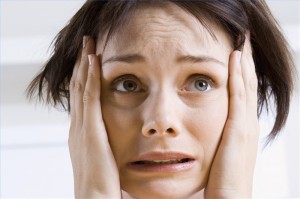 Fluorescent lighting uses a combination of gasses and electricity to light up. Under normal circumstances, that combination of gasses and electricity would continue to grow brighter and brighter, but modern florescent lights use a device called a “ballast” to regulate the intensity of light coming off of the bulb. However, when electricity amounts fluctuate, that same ballast can flip your florescent light on and off very quickly, creating an almost imperceptible strobe effect. This, coupled with the fact that most florescent lighting is too bright for most workstations, adds up to be one major headache. Literally.
Fluorescent lighting uses a combination of gasses and electricity to light up. Under normal circumstances, that combination of gasses and electricity would continue to grow brighter and brighter, but modern florescent lights use a device called a “ballast” to regulate the intensity of light coming off of the bulb. However, when electricity amounts fluctuate, that same ballast can flip your florescent light on and off very quickly, creating an almost imperceptible strobe effect. This, coupled with the fact that most florescent lighting is too bright for most workstations, adds up to be one major headache. Literally.
Even if you cannot perceive the flicker, your brain can still process it. Like subliminal messaging, the flash of light is there and gone before you can recognize it, but the message still gets through. This repeated strobbing of the light can cause headaches, eyes strain and other stress and fatigue inducing symptoms as your body tries to manage the sudden change in lighting. It can elicit changes in mood or contribute to that down-in-the-dumps feeling you get towards the end of the day.
One of the major factors that florescent strobe can play into is sore or strained eyes. Your eyes and brain have to focus and refocus or work extra hard to keep your pupil appropriately dilated for the changing light conditions.
LED Lighting does not use the same method of creating light, instead using the movement of electrons through a semi-conductor material, not a filament like traditional light bulbs (which can burn out) or through a gas like florescent lighting. This means that LED Lighting doesn’t need a ballast, and won’t flicker on and off like a florescent light, meaning no mini-strobe and no headaches.
If you are interested in LED Lighting alternatives for your home, office or school, contact us soon!
